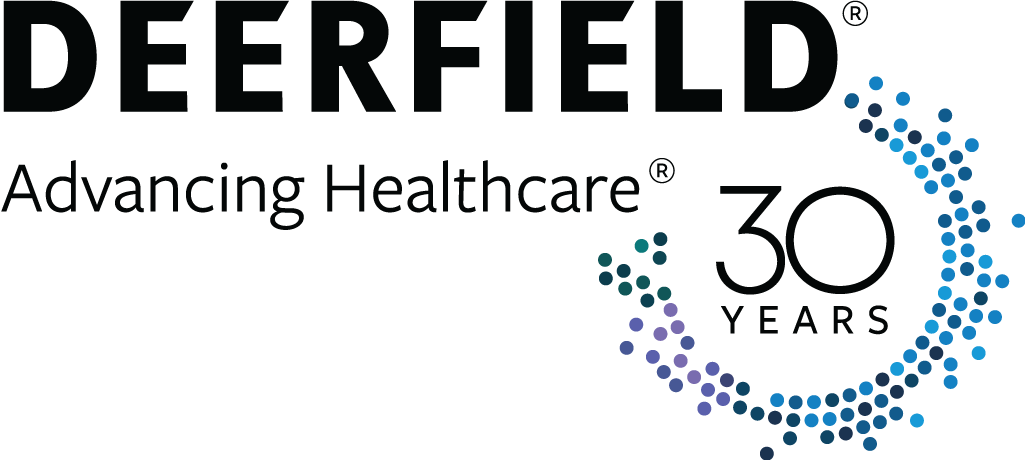2017 has been a landmark year that has seen the
approval of two new immunotherapies known as chimeric antigen receptor T-cell
(CAR-T) therapies, which are gene edited immune cells designed to recognize and
attack certain cancers delivered in a one-time infusion. Much has been said
about these products, and more still will be said as it is expected that these
products get approvals in new indications, as well as the first-time approvals
of other CAR-T products. Given the sophisticated science and novelty behind
CAR-T, they are often mentioned in the same breath as gene therapy products. In
some instances this may be merited, while in others it may sell CAR-T short
relative to the slate of already approved gene therapies. Here, we will
highlight key aspects of CAR-T, some lingering questions following these
initial approvals, and points of differentiation from other gene therapy
products.
Kymriah was the first CAR-T product approved in the
US this year for certain acute lymphoblastic leukemias, and Yescarta was
subsequently approved for certain large B-cell lymphomas. In both cases,
eligible patients have already failed multiple lines of chemotherapy and even
failed bone marrow transplantations (BMT) for their blood cancers. CAR-T has
been shown to take patients who were otherwise nearly on death’s doorstep and
given some what appear to be fairly durable remissions. The upper bound of this
range is still unknown simply because trial patients continue to be followed
out in real time. In the case of Kymriah, roughly half of patients in clinical
trials had a previous BMT, while 8% had two or more BMTs. With standard of
care, these patients would otherwise have a median survival of roughly four to
seven months, versus some patients out over 14 months post CAR-T treatment and
still being followed. These late line ALL patients have had a near doubling of
complete responses (disease remission) of roughly 83% versus roughly 20-40%
depending on standard of care chemotherapy. Other patients, while they may
initially have a good response to CAR-T but subsequently relapse, have gone on
to a repeat CAR-T treatment in clinical trials, or possibly BMT. However, the
interim CAR-T treatment is thought to improve post-BMT prognosis for some of
these patients.
Institutional Complexity
The technical skillset required to administer these
therapies limits the universe of locations to a select number of specialized
cancer treatment centers, typically the centers of excellence that have
historically performed the more difficult BMTs. Most of these centers, who also
participated in the registrational trials, issued press releases in the hours
and days following the approvals of these products noting their involvement in
clinical trials and plans to offer commercially, as a testament to the medical
community’s excitement for them. There is also a competitive advantage for
these types of centers to be proficient in the delivery of CAR-T, as more
products and indications are expected to follow, as mentioned above. It will
likely only be incrementally more difficult to offer additional CAR-T options
as compared to the initial legwork of preparing to offer CAR-T. This complexity is due to several factors:
patients are already very sick before they arrive for treatment, and that a
multi-specialty team needs to be assembled to deal with any side effects that
may arise. The timing and severity of these side effects, most notably cytokine
release syndrome (CRS), is somewhat variable, occurring anywhere from days to
weeks post-infusion.
Though the administration of CAR-T is a simple
infusion, many centers are choosing to administer in the inpatient setting
rather than outpatient, as then there is some internal control over the
availability of medical or neurological intensive care unit beds if and when CRS
occurs. CRS is a result of the CAR-T cells destroying the patient’s cancer
burden, with that destruction causing a release of cytokines. The release of
cytokines in general does not produce such a severe side effect, but rather the
volume of cytokines the body needs to deal with as a result of the CAR-T doing
its job so well. Some patients need to be placed into a medically induced coma
depending on the severity of CRS. While a difficult side effect, it is somewhat
of a catch-22 as it is a sign that the CAR-T is working appropriately.
There is an expectation that over time, the
administration will migrate outpatient as we gain a better understanding of
pre-treatment parameters that may influence the likelihood of severe CRS, and
patients can be triaged for in or outpatient administration as appropriate.
Other Logistical Concerns
Novartis, the maker of Kymriah, announced a price of
$475,000 upon approval, leading many to speculate that this was effectively the
price of a cure for any CAR-T product, in any indication. However, Novartis also
said it plans to pursue indication-based pricing for Kymriah, such that future
approvals for the drug in other indications, with larger or smaller patient
populations, could come with lower or higher prices, accordingly. Further, the
Swiss pharmaceutical company said it has
a collaboration in place with the Centers for Medicare and Medicaid Services
(CMS) where CMS would only have to pay for Kymriah in patients who responded by
the end of the first month after the one-time treatment.
As of yet, there are scant details on the CMS
arrangement which some have criticized to be more optics than substance. There
are several issues at play: that the one month outcomes point is less relevant
than a three month clinical endpoint; concerns that what amounts to giving
Kymriah away for free to patients who do not respond at one month would trigger
anti-kickback concerns related to the Medicaid best price rule (whereby state
Medicaid plans are supposed to have the least expensive drug prices compared to
other government and commercial payers – so if a patient gets Kymriah for free
because he/she did not respond, Medicaid patients are no longer getting the
best price); and logistics of how to navigate indication-based pricing in the
current infrastructure, whereby drugs are typically given a single billing
code, applicable to all indications. Currently, both products are generally
relegated to using unclassified billing codes, and the normal cycle and
processes for new billing and procedure codes can take several years.
Subsequent press reports[1]
have noted that Novartis has said it will be able to navigate these issues
under the auspices of CMS’ Center for Medicare and Medicaid Innovation (CMMI).
The CAR-T specific demonstration project under CMMI will supposedly provide for
subsequent distinct billing codes that are indication specific once follow-on
indications are approved. Still, details
of any such arrangement have not yet been released by CMS. The small patient
population for the currently approved indication, less than 600 incident cases
per year, should obviate the best-price concerns given that any unique payer is
unlikely to see multiple claims in the same quarter.
Some two months after Kymriah’s approval came the
approval for Yescarta. Though its owner, Gilead Sciences, had paid $12 billion
dollars earlier this year to acquire Kite Pharma, the original maker, it priced
Yescarta at $373,000, coming in notably lower than expectations. No
outcomes-based contracts have been specified for now.
Despite the high price tags and lack of clarity on
the outcomes agreement, there does seem to be some resolve from both providers
and payers to push ahead, though it is early days and still slow going. A
recent news article reported only 5 patients have yet been treated with
Yescarta as of mid-December, citing predominantly reimbursement issues from
Medicare and Medicaid as being the rate-limiting factor[2].
Still, CAR-T treatment centers have had to assume a certain amount of financial
risk just to become equipped to administer CAR-T, before even commercially
treating a single patient, and there is still some willingness to take on risk
with the first few patients if it means ironing out the process with different
payers.
Comparison to Gene Therapy
The early bumps for CAR-T may leave some people keen
to portend a similar fate for CAR-T as compared to some of the early gene
therapy approvals in Europe, though this would not do CAR-T justice. There have
been two European gene therapy approvals – Glybera, manufactured by UniQure,
first approved in the EU in 2012 for an ultra-rare genetic disorder called
lipoprotein lipase deficiency, and Strimvelis, for a rare autoimmune
deficiency, developed by GlaxoSmithKline and approved in 2016. Neither of these products has fared well. In fact, in October UniQure announced that it
would not renew the therapy’s market authorization, and Glaxo has put
Strimvelis up for sale after only a single digit number of patients were
treated.
There are several factors which might determine
whether or not these highly novel therapies are commercially successful. These include price tag, number of potential
patients, ability for patients to access the treatment, and the degree of unmet
need the therapy addresses. In Europe, it might be easy to point to high price
tags as the reason for the gene therapy failures, with list prices of $1
million and $600,000, respectively, particularly as the EU system is far less
tolerant of high drug prices. However, this was countered in part by innovative
approaches, such as the money back guarantee for Strimvelis if the drug lacked
efficacy. But it is also clear these weren’t perfect drugs. Glybera, for
instance was only tested in 27 patients and failed to demonstrate lasting
effects. In contrast, the CAR-T clinical data is comparatively much more
robust, and there are more than 30 treatment centers certified to administer
these products at present in only the first few months post-approval.
Against that backdrop, with two US CAR-T approvals,
and two European gene therapy approvals under our belts, the first gene therapy
in the US was just approved – Luxturna, an ophthalmic gene therapy.
While Spark has not yet announced pricing for Luxturna, its CEO has previously said publicly that economic modeling studies would support a price tag over $1 million. An analysis done by MIT Technology Review would seem to closely corroborate that number[3]. By plotting the incident patient populations and prices of the four approved CAR-T and gene therapy products, and knowing the incident patient population for Luxturna of fewer than 30 patients per year, it interpolated a price around $900,000, effectively coming in between Glybera and Strimvelis, but on the opposite end of the spectrum from the CAR-T products. Spark has indicated it plans to announce pricing details in January, at which point we may get better clarity on whether Luxturna’s launch will look more like that of the EU gene therapies or the US CAR-T products.
[1]
https://pink.pharmaintelligence.informa.com/PS121853/CART-IndicationBased-Pricing-May-Be-Evaluated-In-Medicare-Demo
[2]
https://www.bloomberg.com/news/articles/2017-12-14/cancer-patients-with-little-time-left-wait-for-gilead-s-new-drug
[3]
https://www.technologyreview.com/s/609197/tracking-the-cost-of-gene-therapy/



















